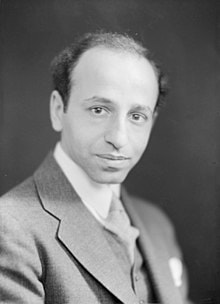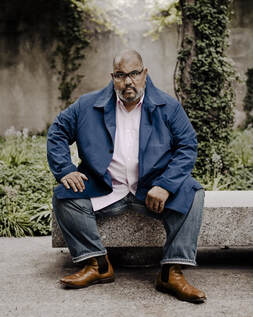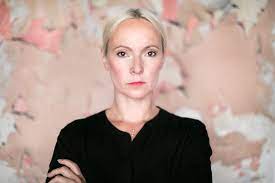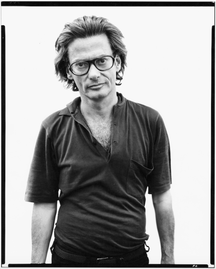What are you trying to convey?
Viewers of the portrait should see more than just a recognizable photograph of someone. The picture must contain mood, show personality and character, allowing the viewer to draw conclusions about the person in the portrait.
Could you be inspired by master paintings and want to create that style in a photograph? How could you copy the lighting or maybe think of a way to stylize the photograph like the painting. Go to the Met and look at the master portrait paintings, who’s style do you like best. Check out lens scratch's list of portrait photographers and find a style or photographer that catches your eye. Do you think you would want to try something like this?
Maybe you have something to say about a particular culture or important history and identity of people that are not represented truthfully or with respect.
- What does it mean, represent, symbolize? What do the gestures, expression, clothes, tell us? What is the photographers intention? What can we recognize in ourselves by photographing others?
- What about its structure, form? Lighting, perspective, scale, depth of field, composition?
- How does it make you feel? Can you describe the emotion?
- Do we understand a part of this stranger?
- Does the photo remind us of ourselves, of our own memory? Does it remind us of something more collective, a social memory?
How can you reveal someone’s character?
- Photograph your subject with different expressions, smile, serious, thoughtful, dreamy…
- Communicate with your subject, draw them out, get them to feel comfortable, let down their guard. Look for those in between moments, in between expressions…Let your subject feel confident, let them know the photos look great…keep going…
- The objective is to display the likeness, personality, and even the mood of the subject. Usually a portrait photograph is made with the subject aware of being photographed and the photographer in control. However, a portrait can also be created in a candid, unguarded moment, as well. The sense of awareness or lack of awareness by the subject will have a profound effect on the interpretation of the image.
- you need to exude confidence as the photographer, don’t be fumbling or nervous with your equipment, be organized, calm, and in tune with your subject. Make them feel important.
Yousuf KarshYousuf Karsh (December 23, 1908 – July 13, 2002) was an Armenian-Canadian photographer known for his portraits of notable individuals. He has been described as one of the greatest portrait photographers of the 20th century
|
|
Dawoud BeyDawoud Bey is an American photographer and educator known for his large-scale art photography and street photography portraits, including American adolescents in relation to their community, and other often marginalized subjects
|
|
Sirli RaitmaIn 2018 Sirli Raitma created a series entitled EHA, The series featuring her mother in a variety of ensembles was the result of a collaborative effort to connect and communicate in a joyful, creative way. Eha is a natural model and was at the opening, soaking in all the positive attention. I simply love this work, work filled with wit and color and whimsy and beauty, and most importantly the poignant celebration of love.
|
|
Richard AvedonRichard Avedon (May 15, 1923 – October 1, 2004) was an American fashion and portrait photographer. He worked for Harper's Bazaar and Vogue, specializing in capturing movement in still pictures of fashion, theater and dance. An obituary published in The New York Times said that "his fashion and portrait photographs helped define America's image of style, beauty and culture for the last half-century"
|
|
Shooting Tips and Things to Experiment With
- The most flattering light for most portraits is soft and off-camera. A large north-facing window works, as does the electronic equivalent, the softbox (light bank).
- If your subject is outdoors, an overcast day is best. If the day is sunny, make sure to use a reflector or electronic flash to fill in shadows underneath the eyes.
- Alter Your Perspective—pick a different angle of view
- Play with Eye Contact Looking off camera, Looking within the frame
- Capture the Moment Are they doing something they like? Do you want to see them unstaged, unposed, natural?
- Experiment with Lighting—no shadows, or shadows on them, patterns of light, hard or soft lighting.
- Move Your Subject Out of their Comfort Zone—put a businessman in a playground, have a scientist jump, make serious silly, the silly serious—mix it up!
- Shoot Candidly
- Introduce a Prop or costume or perhaps an object of importance of them
- Focus Upon One Body Part – Get Close Up
- Obscure Part of your Subject
- Take a Series of Shots
- Frame Your Subject
- Go with a Wide Angle
- Play With Backgrounds
- Change the Format Framing
- Hold Your Camera on an Angle
- Take Unfocused Shots
- Introduce Movement
- Experiment with Subject Expressions
- Fill the Frame
- Find an Interesting Subject
- Experiment with colors to offset your subject.
- Do you want to introduce drama into the portrait? Do you want the portrait to be intimate? Do you want the portrait to depict the individuality of your subject? Do you want to interject fantasy into the portrait? Do you want to photograph your subject with a photojournalistic naturalist approach? Do you want the portrait to be extrapolated from an event?
THE ASSIGNMENT
30% story
30% composition
30% editing
10% artist statement
Paragraph 1: Who/What
Who / What is the subject of your photos? What was your idea going into this portrait session? What story were you trying to tell?
Paragraph 2: Why
Why did you choose to photograph this person or capture this specific idea? What deeper connection do you have with this person or subject that compelled you to take these pictures?
Paragraph 3: How
What intentional choices did you make in your compositions or editing to help tell the story in these portraits (Perspectives angles, composition techniques, cropping, color treatments)? Where specifically in your photos do you demonstrate that?
Paragraph 4: Reflection
What did you learn? What went well? What did you struggle with? If you were going to do this again what would you do differently? If you were to give someone advice who was just starting the project what would you tell them.
- you will be submitting a series of 5 photos from one session and placed into a google slide. no more than 2 images per slide
- minimum of 40 photos taken from the session
- intentional use of light to help tell the story
- include symbolism through colors/props/background/setting/makeup/etc
30% story
30% composition
30% editing
10% artist statement
Paragraph 1: Who/What
Who / What is the subject of your photos? What was your idea going into this portrait session? What story were you trying to tell?
Paragraph 2: Why
Why did you choose to photograph this person or capture this specific idea? What deeper connection do you have with this person or subject that compelled you to take these pictures?
Paragraph 3: How
What intentional choices did you make in your compositions or editing to help tell the story in these portraits (Perspectives angles, composition techniques, cropping, color treatments)? Where specifically in your photos do you demonstrate that?
Paragraph 4: Reflection
What did you learn? What went well? What did you struggle with? If you were going to do this again what would you do differently? If you were to give someone advice who was just starting the project what would you tell them.
FORMAL PORTRAITS:
Have your subject dress in appropriate attire for a formal photograph – suit, dress, slacks and shirt, etc. If you have access to a studio set-up with a background, use it. If not, choose a building or location with is appropriate for the story you are trying to tell. Shoot 5 different poses or locations or angles.
CASUAL PORTRAITS:
Have your subject dress in appropriate casual wear and choose a location, which is more relaxed than you used for the formal portraits. Blue jeans, a cute skirt outfit, a sundress, or a short set might be appropriate attire. The poses should be more relaxed – sitting on the ground, lying on the ledge, sitting on the stairs, etc- and the subject should experiment with facial expressions – smiling, thoughtful, pensive, etc. Shoot 5 different poses or locations or angles.
PERSONALITY PORTRAITS:
Subject can dress up or use props or you can have the location or the action in the shot depict the subject’s personality. Examples: a teenager playing with a toy, a child playing hide and seek, an adult making silly faces – etc. Shoot a series of 5 shots for this set. Now, discuss your subject’s hobbies and activities. Choose at least two DIFFERENT elements of their personality or hobbies or interests which you can use to create an incongruity of elements shot. For example: a girl who takes ballet, but loves football. Take a shot of her in a tutu with a football jersey. Shoot 5 different poses, locations or angles.
SELF PORTRAIT:
Think about the different sides of your personality, your range of interests, the various masks you were in different settings, or the internal you vs the external you. How can props, locations, clothing etc. highlight these different sides of you. Shoot 5 different poses, locations or angles.
Have your subject dress in appropriate attire for a formal photograph – suit, dress, slacks and shirt, etc. If you have access to a studio set-up with a background, use it. If not, choose a building or location with is appropriate for the story you are trying to tell. Shoot 5 different poses or locations or angles.
CASUAL PORTRAITS:
Have your subject dress in appropriate casual wear and choose a location, which is more relaxed than you used for the formal portraits. Blue jeans, a cute skirt outfit, a sundress, or a short set might be appropriate attire. The poses should be more relaxed – sitting on the ground, lying on the ledge, sitting on the stairs, etc- and the subject should experiment with facial expressions – smiling, thoughtful, pensive, etc. Shoot 5 different poses or locations or angles.
PERSONALITY PORTRAITS:
Subject can dress up or use props or you can have the location or the action in the shot depict the subject’s personality. Examples: a teenager playing with a toy, a child playing hide and seek, an adult making silly faces – etc. Shoot a series of 5 shots for this set. Now, discuss your subject’s hobbies and activities. Choose at least two DIFFERENT elements of their personality or hobbies or interests which you can use to create an incongruity of elements shot. For example: a girl who takes ballet, but loves football. Take a shot of her in a tutu with a football jersey. Shoot 5 different poses, locations or angles.
SELF PORTRAIT:
Think about the different sides of your personality, your range of interests, the various masks you were in different settings, or the internal you vs the external you. How can props, locations, clothing etc. highlight these different sides of you. Shoot 5 different poses, locations or angles.
RESOURCES & REFRENCES
https://fotoprofessor.wordpress.com/informal-portrait-assignment/
https://fotoprofessor.wordpress.com/informal-portrait-assignment/




